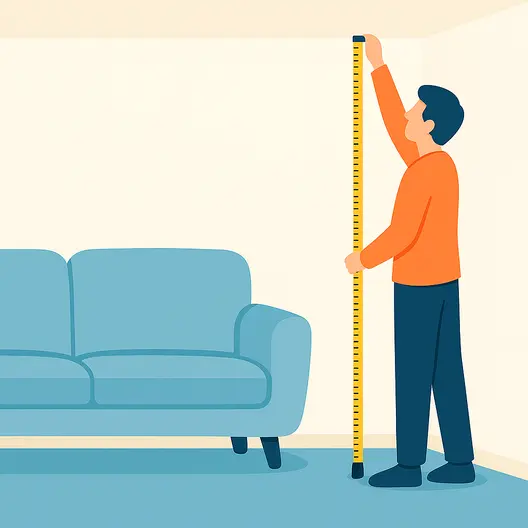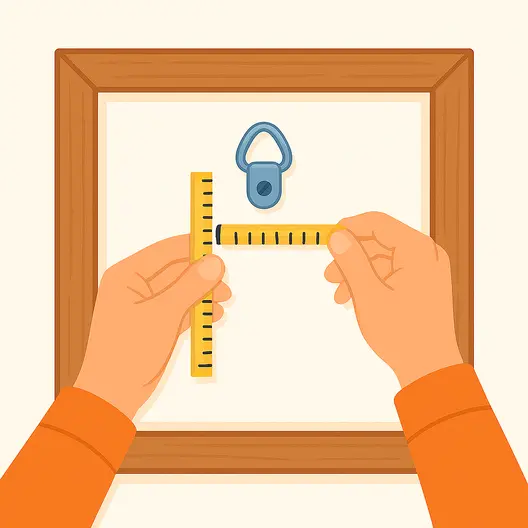-

1. Measure the wall
Use a steel tape and note the full height and width of the area where the piece will live. If the wall runs floor-to-ceiling behind a sofa, measure from the floor, not the cushion top.
-

2. Add your artwork size
Enter the frame’s outside height and width dimensions in centimetres.
-

3. Measure any obstructions
Is there a shelf, picture rail, fireplace mantel or other obstruction beneath the artwork? Record the height and width of that obstruction and tick “Include obstruction” in the form. PerfectHang will raise or centre your piece so it clears the obstacle while still following the 145 cm eye-level rule.
-

4. Pick a mounting method
Choose Wire, Hook or Bracket. The calculator pre-loads the correct offset logic for each.
-

5. Measure your fixings
Wire hang: measure the wire inset (gap from frame edge to wire anchor), the drill-bit hole diameter, and the offset from the top where the wire sits under tension.
Hook hang: record the hook or D-ring item height & width, plus the hole diameter and offset from the top where the hook meets the frame.
Bracket mount: measure overall item height & width, count the number of fixing points, note the bracket inset (gap from frame edge to side of the bracket), and enter drill-bit hole diameter and offset (gap from the top of frame to top of the bracket).
-

6. Tap Calculate
The on-screen diagram updates in real time. Print it, or screenshot it on mobile, then mark the drill points using the XY measurements provided.